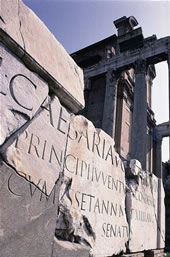 |
Publishing
ANTARCTICA The earth’s white hearth
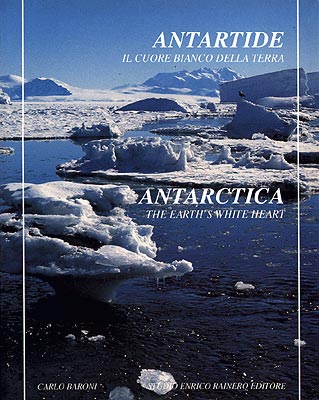
Each one of us possesses a hidden territory
That has little or nothing to do with our normal everyday lives.
It is a place that is deep within in our soul,
where our dreams and yearnings, thirsty for knowledge, are united,
where our earliest nightmares have their origin and where our desires come to rest.
We get there after a long long journey,
across an Ocean that little by little forces us to forget our normal lives.
We fly over it as if it were a dream,
where reality is only to be found in the white shadows
created by all that whiteness.
This is a space of silence,
where our ideal dialogues whisper together with others,
where we finally make up our minds to resolve the internal conflicts
that reality brings us every day.
Our survival is linked to being able to recognise and face up
to that primitive space,
of knowing how to penetrate it
without altering its essence
and how to arrive at our destination in the teeth of a howling gale,
whose gusty screams still carry the breath of those who came before us,
and will still wait for those yet to come.
Perhaps one day, if governments arrive at a similar level of responsibility, a decision will be made to leave those territories in the world that are strategically vital for the quality of life untouched, and keep them as World Parks managed by the International Community. The International Scientific Community would thus be able to express all its authority and independence while applying the results of its research to concrete environmental problems, without being organized in an emotive and superficial way, as often happens today. The first park with this extraterritorial status could be the Antarctic, followed by, why not, the Forests of the Amazon, the area around the North Pole, the Sahara desert, the marine environments..
In all appearance, this decision would be less advantageous economically (and therefore politically) in the immediate present, but would be much more far-sighted in the prospect of a global village distinguished by the advantages and disadvantages that caome from a growing co-ownership
Mare Nostrum
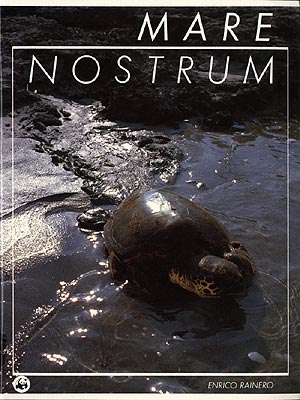
Mare Nostrum nannten die Roxmer das Mittelmeer. Die Entstehung dieses Buches ist eng mit dem Wunsch verbunden gewesen, dieses wertvolle, immer mehr zerstoxrte und zugrundegehende Allgemeingut zuruxckzuerobern. Das Meer gehoxrt all denen, die die Natur lieben, die sie erleben, ohne sie zu zerstoxren und sie als ein erhaltenes und zu bevahrendes Erbe ansehen. Dieses Buch bietet zwei Leseteile. Im einen werden die wichtigsten Oxkosysteme angeschnitten, mit der Beschreibung derjenigen, die noch zu retten sind. Auberdem geht es um einige leidenschaftilich durchgefuxhrte Aktivitaxten und Widmungen, zu denen zum Beispeil die Leitung und Verwaltung von Schutzgebieten oder die Erhaltung vom Aussterben bedrohter Tiere gehoxrt. Der zweite leseteil ist dagegen fuxr diejeningen gedacht, die die einzelnen Themen anhand von Bibliographien, Schemata und Tabellen vertiefen moxchten, um aktiv am oxkologischen Kamf teilzunehmen, in der Uxberzeugung, dab das Meer leben mub.
Gardens labyrinths paradise
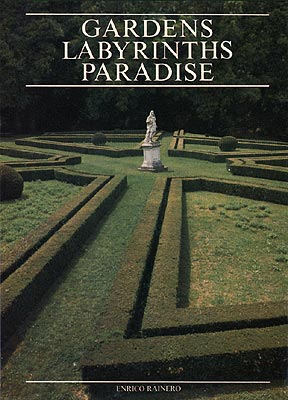 This book offers an itinerary of invention and fantasy within the ideal garden, created by joining together naturalistic and artistic phenomena, and the mythological and allegorical wonders of the centuries-old history of man and his garden.
This book offers an itinerary of invention and fantasy within the ideal garden, created by joining together naturalistic and artistic phenomena, and the mythological and allegorical wonders of the centuries-old history of man and his garden.
The three chapters of this book will be the imaginary foot paths that will guide the visitors through the history of man’s relationship with nature.
The first chapter sees the birth of “vegetation” as the allegory of the birth of life; the elements – water, air, fire, earth – are united in a primitive nature that was then utilized by man for his own survival. Intervention begins, together with a gradual transformation of the terrain and landscape.
The second chapter begins with the interpretation and use of nature as pleasure or as an aesthetic motive. From the Medieval “Hortus Conclusus” to the majestic gardens of the Medici Villas, these historical gardens increasingly gained an architectural significance. They specialized in a growing, symbolic value at once aesthetic, political, mystical.
Exceptional allegorical representations triumph in the third chapter: man’s initial disorientation in science, knowledge and spirit are represented by the “dark forest” and the Labyrinth whose recurrence of paths scatter and confuse human attempts to achieve…? Each effort is expressed in ways that are recreational or spiritual, mystical or satanic; man’s internal search for Paradise is represented by the secret garden while the garden theatre repeats a performance to infinity.
The theme is developed along two parallel journeys: the first by images, the second by a wealth of quotations that emphasize the photographs.
We have played with the subjects photographed, interpreting them graphically and accentuating the structure that was at times symbolic, at times aesthetic; we have given them the rhythm of the seasons’ cycles.
Finding ourselves each time more involved in this journey, we realized the validity of the warning “one does not build labyrinths without getting lost”
THE TREE memory of civilization
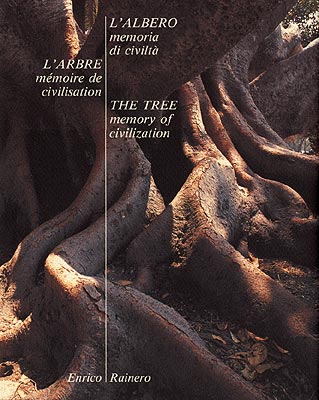
The idea behind this book came from the though that, right from the beginning of civilization, the tree has been the subject of man’s attention, study and veneration, as well as representing a symbol that has been interpreted in various ways, according to various cultures, in diverse historical periods all over the world.
Our aim was to find the most thorough means of representing the concept of the universality of trees, both through easy reading and comprehension, and by reproducing as many examples in the book as possible from among a wide variety of epochs and from places all over the world.
Our intention certainly was not that of planning an arboreal treatise or a catalogue, however synthetic, of environments and historic testimonials.
We believe we have achieved our target by putting together the types of tree that are particularly emblematic of the various world ecosystems, shown in up-to-date photographs; thus creating “spatial representation”.
As a result we have also given this research some historical interest by returning to the past and reproducing antique etching, prints and drawings: therefore here we have “temporal representation”.
Moreover, as we were convinced that, in all places and in all times, the relationship between man and nature (man and trees) has always followed the same vital, sentimental and philosophical pattern, we have purposely placed modern images next to antique ones, and paired them together, following formal standards of freedom while maintaining semantic precision.
In conclusion, we have completed the work with quotations from famous authors from all periods and countries and, as a result, we have been able to emphasize the semantic value to be found in the images. Therefore the trees has become for us, as for those who have lived for centuries beneath its protective and inspiring branches, the silent witness of our civilization’s evolution…
Florence
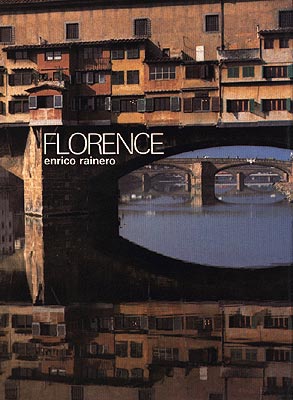
Another book about Florence!
But how is it possible to photograph again this eternal and universal city today?
More importantly, how can one “read” Florence, before beginning to understand her?
And which Florence?
The Florence of monuments, palaces, churches?
The Florence of art galleries and famous sons?
The Florence of history?
The Florence of craftsmanship and folklore?
The Florence of modern life, of industries, of tourism, of shops?
The Florence of spaces painted with limpid and changing light, continually creating new vistas and shapes in her buildings?
“Firenze fa buca” that is, “Florence is a vortex”, one say in undiluted Florentine. Among the beautiful and the sublime, the ugly and the monstrous, all of which are present in this vortex, how can one choose the things which will make a book and not an encyclopaedia about this city?
There was a storm of doubts which clamoured about me before I set out to shoot the first photographs; then, little by little, the whole started taking shape. Every subject became clearer, uniting itself to others, even contradictory ones; everything began to come to life under the same shadows of celebrated Florentine monuments.
And so, in order to show Florence as an infinite kaleidoscope of changing faces, I decided to bring together written testimonies: witnesses to her present, written by some of the most important people who have lived or who were born in Florence, who have breathed and walked in this city.
Thus, beginning from the historical-geographical origins of Florence, with the Etruscans and the river, I arrived at those well-known surrounding hills: I walked the city’s streets and piazzas, watched her daily life, and with a sense of irony recorded both her pratfalls and her moments of glory: in this way I have told her story.
Save the birds
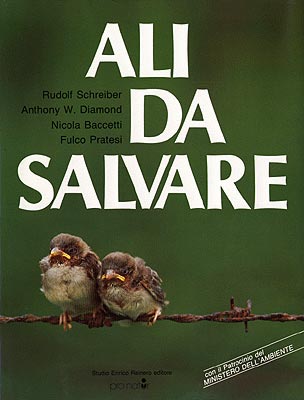
Nature should be a source of endless delight. Some of us have the great good fortune to be actively involved as professional conservationists. For others, a wealth of books, television programmes and films provides a magic carpet from which to enjoy the spectacular variety of the world’s wildlife. Within this realm, birds are the object of a special wonder. From the bizarre species of remote islands and jungles to the familiar birds of our hedgerows and gardens, they all belong to a natural world that enriches our lives in countless ways.
But can their survival be taken for granted? Literally hundreds of species are in serious danger of extinction. Each one is unique; the product of millions of years of evolution. But today, as many as one in ten of the world'’ birds could be under sentence of death. We are their executioners, sometimes with gun and trap, but mostly by our destruction of their habitats and degradation of the environment. We possess the power and the knowledge to halt the accelerating rate of extinctions We must do so. We cannot bring back what is already gone; that is a loss that will impoverish the lives of our children and all future generations.
When we were invited to take part in the SAVE THE BIRDS campaign, we accepted gladly. SAVE THE BIRDS is an exciting book that pulls no punches. It is beautiful, but its message is tough and uncompromising. We need to save the birds if, in the end, we are to save ourselves.
Too often we allow ourselves to believe that because a problem is large there is nothing we, as individuals, can do about it. Nothing could be further from the truth. The SAVE THE BIRDS campaign is based on the premise, “think globally – act locally”. It is a challenge we accept wholeheartedly, and one in which we invite you to join us.
Sir David Attenborough
Tivoli tracce del tempo
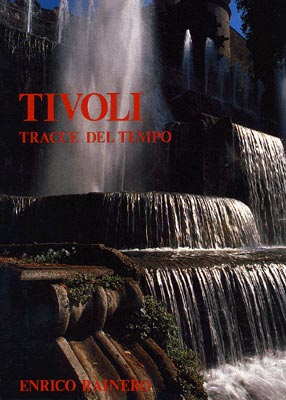 Procedere da Roma inoltrandosi nei primi chilometri della Via Tiburtina è come entrare in un particolare viaggio all'indietro nel tempo.
I passi nel Parco della Villa Adriana calpestano un terreno fuori della nostra epoca.
I secoli sono trascorsi cancellando la vita degli edifici, i passi concitati delle milizie e quelli meditabondi dell'imperatore. Ne rimane però nell'aria lo spirito, conservato dalle colonne solitarie che si ergono al cielo, dalle sale grandiose ora frequentate soltanto da ombre.
Un libro su Tivoli non poteva che riprendere questo spirito, ricercando tutte quelle tracce che ogni epoca ha lasciato, come stratificazioni incastonate nei muri dell'odierna città, nelle campagne che la circondano, mentre le cascate delle sue Ville continuano a creare giuochi d'acque, cadenzate da ritmi musicali. I blocchi di travertino vengono ancora estratti dalle sue cave, materia informe pronta a prendere vita grazie all'eterno estro dell'uomo.
Lo stesso estro ci spinge oggi a conservare al meglio quelle tracce, vestigia di passate grandezze e bellezze, con le quali potremo intraprendere, noi e quanti dopo di noi, un impalpabile dialogo con il tempo.
Procedere da Roma inoltrandosi nei primi chilometri della Via Tiburtina è come entrare in un particolare viaggio all'indietro nel tempo.
I passi nel Parco della Villa Adriana calpestano un terreno fuori della nostra epoca.
I secoli sono trascorsi cancellando la vita degli edifici, i passi concitati delle milizie e quelli meditabondi dell'imperatore. Ne rimane però nell'aria lo spirito, conservato dalle colonne solitarie che si ergono al cielo, dalle sale grandiose ora frequentate soltanto da ombre.
Un libro su Tivoli non poteva che riprendere questo spirito, ricercando tutte quelle tracce che ogni epoca ha lasciato, come stratificazioni incastonate nei muri dell'odierna città, nelle campagne che la circondano, mentre le cascate delle sue Ville continuano a creare giuochi d'acque, cadenzate da ritmi musicali. I blocchi di travertino vengono ancora estratti dalle sue cave, materia informe pronta a prendere vita grazie all'eterno estro dell'uomo.
Lo stesso estro ci spinge oggi a conservare al meglio quelle tracce, vestigia di passate grandezze e bellezze, con le quali potremo intraprendere, noi e quanti dopo di noi, un impalpabile dialogo con il tempo.
L'isola d'Elba
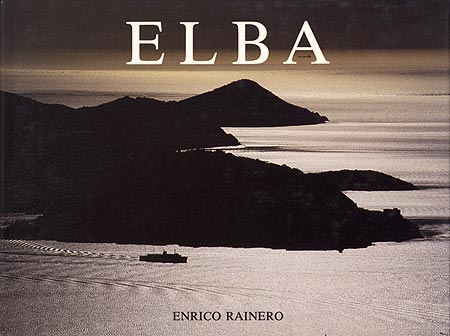 Basta sbarcare da uno dei tanti traghetti che quotidianamente uniscono l'isola al continente o dalla passerella di una barca attraccata in una qualche parte dell'Elba, per rendersi conto che si sta entrando in un altro mondo: i colori sono più intensi, più vivaci, forse perché il sole non è mediato da nessuna cortina di inquinamento e la distesa di acqua che ci circonda è del blu più intenso che si possa immaginare, screziata da piccole creste bianche e riflessi luminosissimi.
La gente è allegra e festosa, aperta al forestiero perché abituata da sempre ad avere ospiti nella propria isola, ad accoglierli nelle proprie case, dividendone il lavoro ed il pane.
Gli isolani si conoscono tutti, si ritrovano 100 volte ogli giorno nelle molteplici occasioni che offre la vita quotidiana e questo essere sempre a contatto di gomito li fa essere un po' campanilisti, ma con tanta bonarietà.
Tale ambiente, che ho vissuto tanto da vicino per realizzare questo libro, vorrei, e tanti altri come me, che rimanesse il più possibile intatto, sano. Elbani, cercate di mantenere la genuinità della vostra terra e del vostro carattere!
Un ringraziamento vada a quanti mi hanno dischiuso le porte dell'Elba, facendomi sentire elbano tra elbani. Ed un altro ringraziamento a quanti sono ritratti nel libro: alcuni, senza neppure saperlo, hanno fatto sì che si concretizzasse in immagini lo spirito di chi vive l'Isola d'Elba.
Basta sbarcare da uno dei tanti traghetti che quotidianamente uniscono l'isola al continente o dalla passerella di una barca attraccata in una qualche parte dell'Elba, per rendersi conto che si sta entrando in un altro mondo: i colori sono più intensi, più vivaci, forse perché il sole non è mediato da nessuna cortina di inquinamento e la distesa di acqua che ci circonda è del blu più intenso che si possa immaginare, screziata da piccole creste bianche e riflessi luminosissimi.
La gente è allegra e festosa, aperta al forestiero perché abituata da sempre ad avere ospiti nella propria isola, ad accoglierli nelle proprie case, dividendone il lavoro ed il pane.
Gli isolani si conoscono tutti, si ritrovano 100 volte ogli giorno nelle molteplici occasioni che offre la vita quotidiana e questo essere sempre a contatto di gomito li fa essere un po' campanilisti, ma con tanta bonarietà.
Tale ambiente, che ho vissuto tanto da vicino per realizzare questo libro, vorrei, e tanti altri come me, che rimanesse il più possibile intatto, sano. Elbani, cercate di mantenere la genuinità della vostra terra e del vostro carattere!
Un ringraziamento vada a quanti mi hanno dischiuso le porte dell'Elba, facendomi sentire elbano tra elbani. Ed un altro ringraziamento a quanti sono ritratti nel libro: alcuni, senza neppure saperlo, hanno fatto sì che si concretizzasse in immagini lo spirito di chi vive l'Isola d'Elba.
Stilografica. Il linguaggio della scrittura
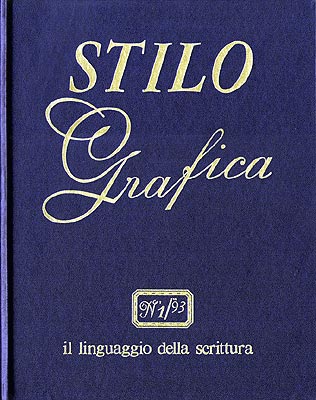 Comunicare. Che gran bella parola, oggi così di moda, menzionata in occasioni sociali ed economiche, collettive e personali.
Comunicare, e subito ci viene in mente la televisione, il telefono, il computer, il satellite; poi si pensa alla pubblicità, perché nell'epoca del villaggio globale, l'associazione è uguale a mercato globale.
L'immagine oggi fa da padrona. E' immediata, è veloce da leggere e da assimilare. Così comunicazione = tecnologia = immagine = marketing.
Mi viene in mente il pittogramma, disegno inciso sulla roccia dell'uomo delle caverne. Che sintesi perfetta di comunicazione!
Tutto, dunque, nell'era tecnologica odierna, si è nuovamente evoluto verso un lontano, preistorico archetipo?
I mezzi permettono la massima qualità di informazioni nel minore tempo possibile.
Ma la qualità? I contenuti? Comunicare la propria personalità, oltre alle proprie idee, spesso è importante, forse fondamentale.
Nell'epoca della comunicazione di massa stiamo ritrovando la necessità di uno strumento che ci permetta di trasferire il nostro pensiero con una caratteristica di personalità, oltre alla solita velocità, uno strumento che recuperi e consolidi la scrittura come mezzo fondamentale del nostro linguaggio.
Lo scorrere di un pennino su un supporto cartaceo, antico come la storia della civiltà umana, ci costringe a riscoprire la necessità di un piacere che è parte di noi stessi, mentre la stampante laser sta facendo il suo indispensabile e tecnologico lavoro.
Comunicare. Che gran bella parola, oggi così di moda, menzionata in occasioni sociali ed economiche, collettive e personali.
Comunicare, e subito ci viene in mente la televisione, il telefono, il computer, il satellite; poi si pensa alla pubblicità, perché nell'epoca del villaggio globale, l'associazione è uguale a mercato globale.
L'immagine oggi fa da padrona. E' immediata, è veloce da leggere e da assimilare. Così comunicazione = tecnologia = immagine = marketing.
Mi viene in mente il pittogramma, disegno inciso sulla roccia dell'uomo delle caverne. Che sintesi perfetta di comunicazione!
Tutto, dunque, nell'era tecnologica odierna, si è nuovamente evoluto verso un lontano, preistorico archetipo?
I mezzi permettono la massima qualità di informazioni nel minore tempo possibile.
Ma la qualità? I contenuti? Comunicare la propria personalità, oltre alle proprie idee, spesso è importante, forse fondamentale.
Nell'epoca della comunicazione di massa stiamo ritrovando la necessità di uno strumento che ci permetta di trasferire il nostro pensiero con una caratteristica di personalità, oltre alla solita velocità, uno strumento che recuperi e consolidi la scrittura come mezzo fondamentale del nostro linguaggio.
Lo scorrere di un pennino su un supporto cartaceo, antico come la storia della civiltà umana, ci costringe a riscoprire la necessità di un piacere che è parte di noi stessi, mentre la stampante laser sta facendo il suo indispensabile e tecnologico lavoro.
Italy’s thousand years of tournaments
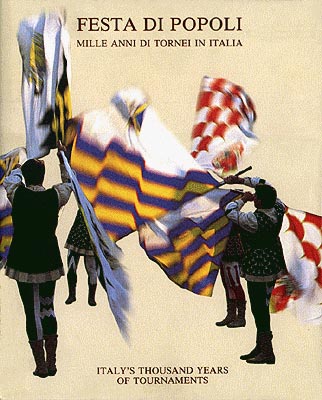 Feasts are held to celebrate or give thanks for something, to bring good luck but, above all, to give people a chance to get together.
Feasts are held to celebrate or give thanks for something, to bring good luck but, above all, to give people a chance to get together.
In the old farming communities feasts days meant an occasion for meeting where marriages could be arranged and agricultural products bartered.
At all times and in all societies, feasts were a moment for a pause in hostilities or the rivalries for the conquest or defence of the territory. That is why they can be considered the symbol the symbol and bearer of peace; even though they incorporate some form of competitive activity, such as tourneys, jousts and athletic challenges.
As a result markets gradually developed around them. The merchandise could be compared at the same time as the ability of the competing champions. Prosperity grew in times of peace and, with it, the desire to widen personal horizons, to get to know new realties, new cultures, new landscapes, and penetrate the artistic spirit and creativity of other civilizations.
The square, the field, the lagoon and the sea became mirrors of the world reflecting the history end the culture of the country, thus encouraging an exchange of different histories and cultures. The original rivalries were transformed into competitive spirit where collective growth became the primary objective of knowledge and communication.